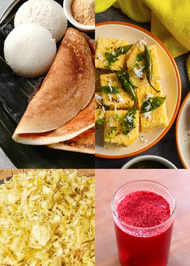01/10Protecting privacy

Even as the move towards “digital India” made lives easier, and social media went viral, the fear of losing privacy got more and more pronounced. In 2017, the Supreme Court stepped in and declared Right to Privacy as a fundamental right, protected by the Constitution. SC ruled that Right to Privacy is “intrinsic to life and personal liberty and is inherently protected under Article 21.” (Image credit: lexica.art)
02/10Same-sex love isn’t criminal


It was seen to be “against the order of nature”. Introduced by the British in 1861, modelled on its own 16th century Buggery Act, Section 377 criminalised consensual sex between persons of the same sex. In 2018, all that changed as SC upheld the right to equal citizenship of members of the LGBTQ+ community. It ruled that Section 377 was unconstitutional “in so far as it criminalises consensual sexual conduct between adults of the same sex” and that punishing sexual activity between two consenting adults under Section 377 violated the right to equality, privacy and personal liberty of such persons.
03/10My vote goes to none


In 2013, SC provided the option of ‘None Of The Above’ or NOTA in EVMs, helping discontented voters make their disapproval loud and clear. It also ensured that using NOTA, instead of abstaining from voting, would prevent misuse of votes or fraudulent voting.
04/10Dark side of the moon


Once you have the rocket, space tripping becomes possible. In 2008, Chandrayaan-1 took off from Sriharikota. India's first lunar mission met its objectives – it also was the first to confirm there was water there – and laid the ground for a moon landing with its sequel. Chandrayaan-2 came in 2019 but if it made a hard landing on the lunar surface, Isro also bounced back with Chandrayaan-3 in 2023. India became only the fourth country to get to the moon and was the first to have landed on the lunar south pole, the intriguing place that always stays hidden from Earth. (Image credit: Reuters)
05/10On your Mars…


In between the Chandrayaan missions, Isro also called on Mars. The Mars Orbiter Mission (MOM), India's first interplanetary mission, took off in 2013 and Isro became only the fourth space agency to reach the red planet's orbit. It was a real bang for the buck, too. MOM outlasted its designated mission life of six months to complete over seven years in Mars' orbit and cost only $74 million. It takes more to make Hollywood movies on space, some pointed out. (Image credit: Isro)
06/10Bye-bye famines


India’s Green Revolution came in the backdrop of famines and low agricultural productivity. In the 1960s, geneticist M S Swaminathan convinced the govt that the high-yielding dwarf wheat that US scientist Norman Borlaug had introduced in Mexico was the answer to India’s food shortage. And from 1968, what happened was indeed revolutionary. Production shot up in Punjab, Haryana and western Uttar Pradesh. High-yielding variety of seeds of varying strains, mechanised farm tools, irrigation facilities, pesticides and fertilisers were used. By 1970, Punjab was producing 70% of India’s foodgrain and the region came to be known as the “food bowl of India”.
07/10Milkman’s magic


Anand in Gujarat, the birthplace of Amul, is replete with stories of a livid Vallabhbhai Patel planning a resistance against Polson, a private dairy company, fleecing farmers by buying milk cheap and selling it at a premium in then Bombay. It was around that time, in 1948, that a young Verghese Kurien reached Anand to work at a dairy farm there. And, as Patel built a robust co-operative movement to unite farmers, Kurien worked on increasing production. In about two decades, Operation Flood, or the White Revolution, was launched. Amul took on the likes of Nestle and it transformed India from a milk deficient nation to the world’s largest milk producer, surpassing the US in 1998. It now contributes 25% of the world's total milk output, with a massive milk grid linking producers throughout India to consumers in over 700 towns and cities. (Image credit: lexica.art)
08/10Atal tunnel


It is the world’s highest highway tunnel, at 10,000 feet, built under the Rohtang Pass in Himachal Pradesh in the Pir Panjal Range of the Himalayas. The 9.02km stretch now links Ladakh to Manali and Chandigarh year-round, avoiding the snow-covered Rohtang Pass in winter. It provides strategic advantage to the Armed Forces, which gets year-long connectivity to border areas. (Image credit: Reuters)
09/10Chenab rail bridge


It isn’t just a design marvel and a stupendous engineering feat, it’s an emotion. For, the Chenab Rail Bridge – the world’s tallest rail bridge at 1,178 feet, spanning the Chenab river – connects Kashmir to the rest of India. It was inaugurated in Aug 2022. The steel and concrete arch bridge carrying a single-track railway line connects Sangaldan and Reasi stations. Train services that will connect Kashmir to Jammu are expected to start soon. (Image credit: AFP)
10/10Kolkata/Delhi metro


The plan was drawn way back in 1920. But the foundation stone for the Kolkata (then Calcutta) Metro was laid only in 1972 and operations began in 1984. It became India’s first rapid transit system and a blueprint for Metros in other Indian cities. In March this year, it hit yet another milestone – when a train whizzed along a short span of 520m for just 45 seconds under the Hooghly river, a portion of the stretch between Howrah and Mahakaran stations, it became the country's first underwater train.
The Metro track that opened in Delhi in 2002 was called the Red Line. It, however, turned out to be the first ‘green step’ for the country’s capital that had begun choking when a growth spurt in the 1990s led to an increase in private vehicles. The Delhi Metro now has 10 colour-coded lines that stretch over 350km with 256 stations. It has a daily ridership of 46 lakh, making it India’s largest and busiest Metro, also connecting its satellite cities like Gurgaon, Faridabad, Noida and Ghaziabad. (Image credit: ANI)

















closecomments
SIGN IN WITH
GoogleEmail